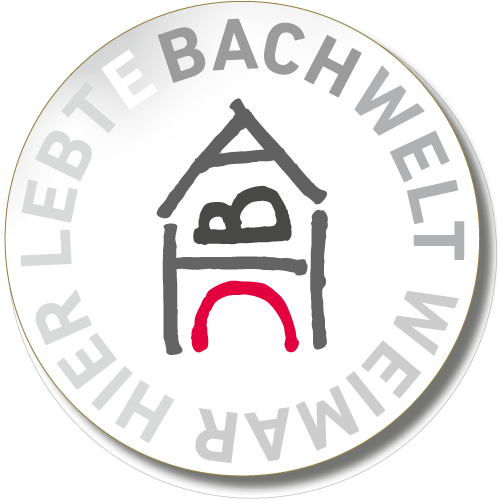Prehistory
The reconstruction of the only authentic place of residence and work of Johann Sebastian Bach at the market in Weimar, which was destroyed by British bombs on February 9, 1945, as well as the development of this singular place into a living, sounding BachWorld Weimar is, in addition to the performance of works by J.S. Bach (BACH BIENNALE WEIMAR), the central goal of Bach in Weimar. This illustration shows a reconstruction of the state until 1945 ( Graphic: A. Hummel, Arte 4D 2011, Sponsored by Friends of Dresden New York).
This vision was supported ideally and materially for more than ten years by the Nobel Laureate in Medicine Prof. Dr. Günter Blobel, honorary member of Bach in Weimar, deceased 2018 in New York.
Bach's residence at the Weimarer Markt is centrally located in the UNESCO World Heritage Site Weimar: Just like the rebuilt Frauenkirche in Dresden, BachWelt Weimar is intended to contribute to keeping ( musical) world cultural heritage alive, and thus to promote international understanding and peace. A networking of these two places, whose destruction took place within a few days in February 1945, is a goal of our initiative to be supported.
This is all the more true as Johann Sebastian Bach's biography shows several close connections to Dresden: Anno 1717 he excelled "against" the famous French keyboard virtuoso Louis Marchand in an organ competition - but without the "opponent", for Marchand had for unknown reasons (among which one can assume his high respect for Bach as the most probable) already hastily departed from Dresden before the scheduled competition, leaving Bach the acclaimed victory at the Dresden court.
In 1733, Bach dedicated his Missa in B minor to the Elector Frederick August II of Saxony and King of Poland. On December 1, 1736, J.S. Bach played a two-hour concert on the new Silbermann organ of the Frauenkirche (not even completed) as a thank-you for the title of "Königlich-Pohlnischer und Sächsisch-Churfürstlicher Hofcompositeur" bestowed upon him by King August III.
The Bach charisma of the then predecessor building, also called "Frauenkirche", of today's Frauenkirche, which was destroyed on February 13, 1945 and rebuilt with the substantial support of Günter Blobel, continues to have an effect to this day: the original stone staircase leading up to the organ, which Bach himself walked on, has been preserved; Bach's works still form a focal point of the music program in the rebuilt Frauenkirche.

